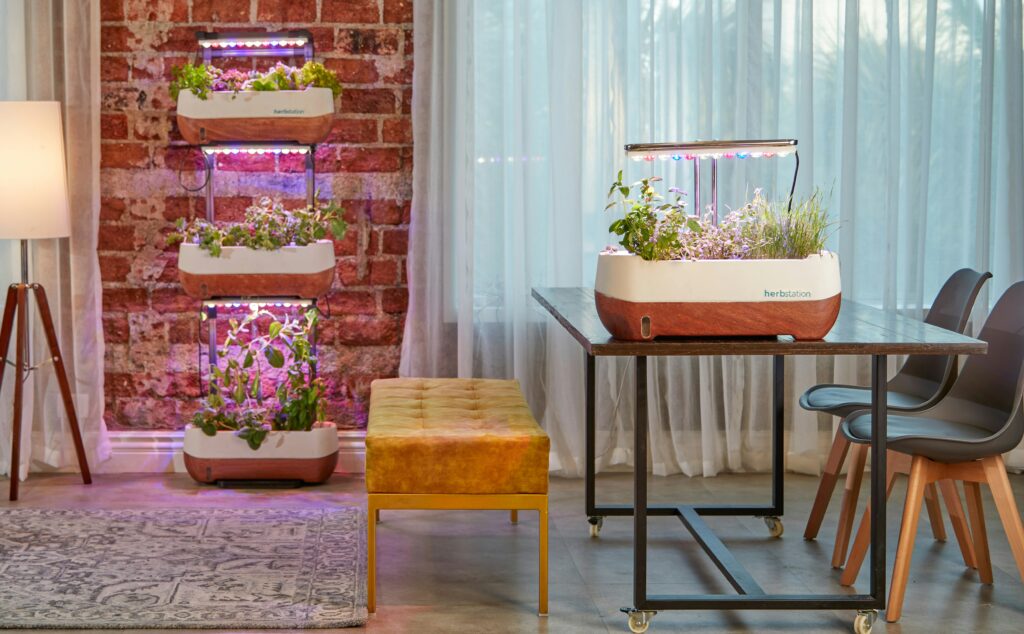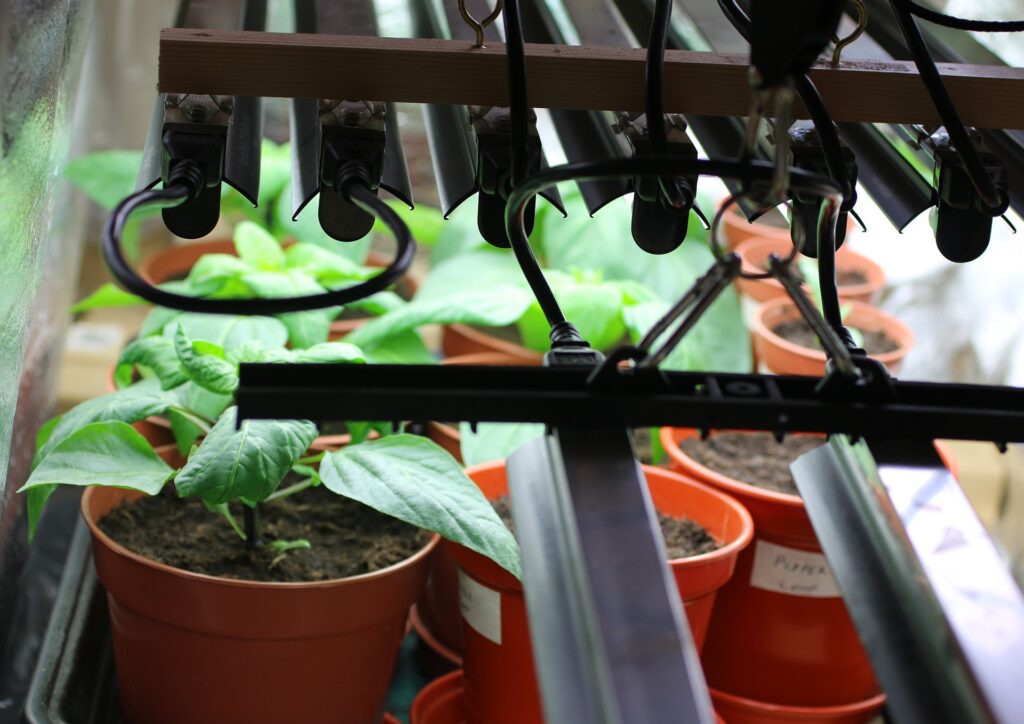There’s nothing like freshly picked veggies straight from the garden! However, maintaining a vegetable garden can be labor-intensive with unpredictable results unless you have the ideal outdoor setting, which includes having the correct soil, adequate sunlight or shade, availability of water, and being inaccessible to various local fauna.
Another option that is gaining popularity is growing inside, where you can basically create the ideal atmosphere, giving the grower far more control. But not every vegetable grows well indoors or requires enough care to thrive successfully indoors.
For example, it is more difficult to grow non-self-pollinating vegetables than it is to grow self-pollinating or non-requiring vegetables. Now let’s see which vegetables are the easiest to cultivate indoors using LEDs by evaluating the degree of difficulty involved.
- Simple to Plant
- In a moderate way Simple to Plant
- Hard to Develop

Simple indoor vegetable growing ideas.
It should come as no surprise that growing cool-season leafy greens indoors is quite simple for lettuce, spinach, kale, watercress, sorrel, and microgreens. They do nicely under LED lights and do not require pollination unless you are cultivating them for seeds. They get roughly 12 hours a day of moderate to full sun, but not very intense solar. As a result, you may hang your lights higher and leave a bigger imprint. Furthermore, you may change the intensity levels of various LEDs by using their dimmers.
Herbs that grow well inside with LED lights include mint, parsley, cilantro, thyme, chervil, turmeric, and cilantro.
Below-ground root vegetables such as parsnips, carrots, and radishes are also excellent indoor plants (just make sure you put them in soil that is deep enough for the mature vegetable). Root vegetables, like turnips and beets, are at ground level. In addition, broccoli (unless you want it to seed), cauliflower, leeks, green onions, and garlic are vegetables.
Vegetables That Are Quite Simple to Grow Inside.
If they aren’t too big, self-pollinating vegetables can be quite easy to cultivate indoors, although they might need closer attention to the light and nutrition. Legumes such as beans and peas, as well as tomatoes, eggplant, peppers, and okra, are among them. Since these vegetables require a lot of light, you’ll need to hang or modify your LEDs to provide them between 14 and 20 hours of light each day.
Herbs that are good for light conditions are dill, fennel, lavender, rosemary, sage, and basil. These can be grown indoors in a sunny place with the addition of an LED grow light.
Tough Vegetables to Grow Inside.
Some of our favorite veggies can be more challenging to cultivate indoors because they require pollinators to bear fruit. Squash, including zucchini, and little fruits like strawberries go nicely with cucumbers. Pollinators are also necessary for other fruits, like melons and berries, that you could think about planting.
You can still grow these inside, but you will have to hand pollinate them, which is a laborious task that could or might not be effective. Finding hybrid types designated as “parthinocarpic”—which do not require pollination but do not yield viable seed—is one way to get around this issue.
Which Grow Light LED is it?
Choose the ideal grow light for your demands and the layout of your grow area, whether it’s a room, tent, or larger area. NextLight offers a range of 120V and 240V LEDs that are perfect for home usage and produce professional-quality results. Because of their modular construction, ChilLED grow lights may be easily adjusted to fit any size room. They also have a DIY series where you can create your own designs.
When not in use, the Nanolux Grow Light folds up to make storage easier. It is lightweight and thin. For a range of different-sized spaces, Horticulture Lighting Group also offers grow lights with larger and smaller footprints.
Depending on the plants you want to cultivate, using LED grow lights to grow vegetables and herbs inside can be a simple process. Understanding their respective light needs can help you choose which varieties to plant and enable you to use numerous grow lights set to varying intensities to cultivate a larger variety.
You have more control over the soil, nutrients, water, and light when you cultivate inside. Furthermore, you won’t have to worry about repelling the local wildlife, such as deer and rabbits, who share your love of veggies!
